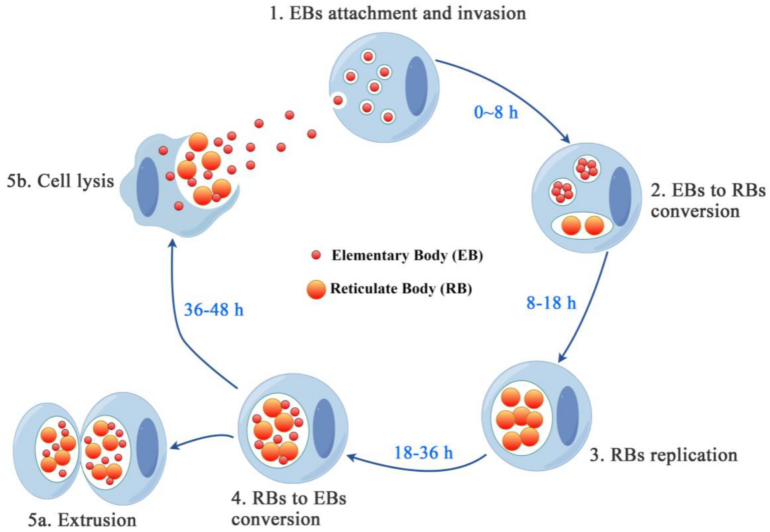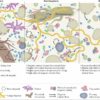The bacterium chlamydia trachomatis is a major cause of sexually transmitted diseases. Bacteria have lots of tricks up their sleeve that help them survive inside cells. One strategy that chlamydia uses is to form protective “bubbles,” called inclusions, which fuse their membranes together to create large pockets of bacteria inside cells. Now, a new study by researchers at Thomas Jefferson University, published in Nature Communications, has shed light on the mechanisms behind this process.
Membrane fusion is important during infection because when some people are infected with non-fusing chlamydia, they tend to have much milder cases.
“It looks like fusion is boosting the potency of chlamydia,” says Fabienne Paumet, Ph.D., a biology researcher and senior author on the study.
Dr. Paumet’s team—led by first author Christine Linton, a Ph.D. student in the lab—used microscopy tools to analyze genetically-modified chlamydia as they underwent membrane fusion. They found that the bacteria used a unique mechanism not seen before.
They observed that for membrane fusion to happen, two “bubbles” needed to form dedicated connection zones that acted like “docking and fusion stations.” These areas, called inclusion contact sites, were packed with special fats and proteins that prepared the membranes for fusion.
The mechanism differs from membrane fusion by eukaryotic organisms or viruses. In eukaryotic organisms, for example, Dr. Paumet compares membrane fusion to a zipper, where the cellular machinery on each side of the connecting membranes is different but complementary; in contrast, the proteins on chlamydial inclusion membranes were exactly the same on both sides.
Dr. Paumet says this research could one day have clinical applications. While antibiotic-resistant chlamydia is currently very rare, it’s likely to become more common in the future. If researchers know more about how chlamydia membrane fusion works, they could one day harness those mechanisms to fight infections that no longer respond to antibiotics.
“The more we know about chlamydia, the more it gives us tools to eventually interfere with it,” Dr. Paumet says.
More information:
Christine Linton et al, Specialized contact sites regulate the fusion of chlamydial inclusion membranes, Nature Communications (2024). DOI: 10.1038/s41467-024-53443-7
Provided by
Thomas Jefferson University
Citation:
How chlamydia forms protective bubbles to survive inside human cells (2025, February 27)



